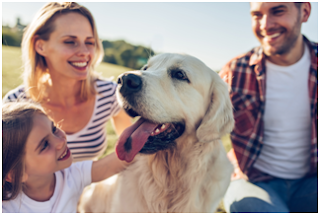FDA Investigates Contaminated Pig Ear Pet Treats Connected to Human Salmonella Infections
Originally posted July 3, 2019
On this page:
The U.S. Food and Drug Administration is coordinating with the U.S. Centers for Disease Control and Prevention (CDC) and state agencies to investigate human cases of Salmonella enterica serotype I 4,[5],12:i:- with a suspected link to exposure to pig ear pet treats.
Fast Facts
- The U.S. Food and Drug Administration, together with the Centers for Disease Control and Prevention (CDC) and State partners, is investigating a suspected link between pig ear treats and human cases of salmonellosis.
- CDC reports that there are 45 cases of human infection with Salmonella enterica serotype I 4,[5],12:i:- in 13 states. Twelve people have been hospitalized.
- Pig ear treat samples collected from bulk bins in retail locations by the Michigan Department of Agriculture and Rural Development (MDARD) tested positive for several strains of Salmonella, but not the specific strain connected to this outbreak.
- On July 3, Pet Supplies Plus issued an advisory to consumers that the firm is recalling bulk pig ear products supplied to all locations by several different vendors. Bulk pig ears were distributed to Pet Supplies Plus stores in AL, AR, CA, CO, CT, DE, FL, GA, IA, IL, IN, KS, KY, MA, MD, MI, MN, MO, NC, NE, NH, NJ, NY, OH, OK, PA, RI, SC, TN, TX, VA, WI and WV. Bulk pig ears were stocked in open bins. Prepackaged branded pig ears are not included in the PSP pig ear recall.
- CDC and FDA are working with state boards of health to determine if there are any cases of human or animal illness linked to the strains of Salmonella found in the tested treats.
- FDA is also working with impacted firms to remove these pig ears from the marketplace and identify other places where they may have been distributed.
- FDA is issuing this alert so that consumers can choose whether to remove pig ear treats from their homes or take steps to potentially prevent Salmonella infection.
- Salmonella can affect both human and animal health. People with symptoms of Salmonella infection should consult their healthcare providers. Consult a veterinarian if your pet has symptoms of Salmonella infection.
- This is an ongoing investigation and FDA will provide the public with new information as it becomes available.
What is the problem?
FDA is coordinating with the U.S. Centers for Disease Control and Prevention and state agencies to investigate 45 human cases of Salmonella enterica serotype I 4,[5],12:i:- across multiple states. Many of these cases have reported exposure to pig ear pet treats.
In the course of the investigation, the Michigan Department of Agriculture and Rural Development (MDARD) visited retail locations where ill people reported purchasing pig ear treats and collected samples. Testing revealed that the samples were negative for the specific
outbreak strain, but the samples tested positive for
Salmonella London,
Salmonella Typhimurium,
Salmonella Newport, and
Salmonella Infantis. Pet Supplies Plus is recalling bulk pig ear products supplied to all its retail locations by several different vendors. FDA is working with the firm to identify the source of the pig ear treats, how they became contaminated, and where they were distributed.
Why is FDA issuing this alert?
The FDA is issuing this alert because contaminated pig ear pet treats represent a serious threat to human and animal health and are adulterated under the Federal Food, Drug, and Cosmetic Act because they contain Salmonella. FDA is also making consumers aware of the issue so they can choose whether to remove pig ear treats from their homes or take steps to potentially prevent Salmonella infection. The agency will update this alert with additional information as it becomes available.
What do consumers need to do?
If you have any of the recalled pig ear pet treats from bulk bins at Pet Supplies Plus stores in AL, AR, CA, CO, CT, DE, FL, GA, IA, IL, IN, KS, KY, MA, MD, MI, MN, MO, NC, NE, NH, NJ, NY, OH, OK, PA, RI, SC, TN, TX, VA, WI and WV, stop feeding to your pets and throw away in a secure container where other animals, including wildlife, cannot access it.
In general, if you choose to feed long-lasting treats like pig ears, practice good hygiene by: monitoring your pet while they have the treat, picking up the treat when they are done with it, keeping treats away from small children, cleaning the areas where the treat came into contact, washing hands, and not allowing your pet lick you, your family members, or surfaces in your home.
What is Salmonella and what are the symptoms of Salmonella infection?
Salmonella is a bacterium that can cause illness and death in humans and animals, especially those who are very young, very old, or have weak immune systems. According to the
CDC, people infected with
Salmonella can develop diarrhea, fever and abdominal cramps. Most people recover without treatment, but in some people, the diarrhea may be so severe that they need to be hospitalized. In these patients, the
Salmonella infection may spread from the intestines to the blood stream and then to other body sites unless the person is treated promptly with antibiotics. Consult your health care provider if you have symptoms of
Salmonella infection.
Pets do not always display symptoms when infected with Salmonella, but signs can include vomiting, diarrhea (which may be bloody), fever, loss of appetite and/or decreased activity level. If your pet has these symptoms, consult a veterinarian promptly. You should also be aware that infected pets can shed the bacteria in their feces and saliva without showing signs of being sick.
Why is the FDA concerned about Salmonella in pet food and treats?
Pet food and treats contaminated with pathogens such as
Salmonella are of particular public health importance because they can affect both human and animal health. Pets can get sick from
Salmonella and may also be carriers of the bacteria and pass it onto their human companions without appearing to be ill. The FDA is aware of cases in which humans and/or animals have gotten sick from exposure to contaminated pet foods and treats (
Salmonella-human cases,
Salmonella-kitten,
Salmonella-kitten, dog).
Once Salmonella gets established in the pet’s gastrointestinal tract, the animal can shed the bacteria, and the contamination will continue to spread. Because animals can shed the bacteria, it’s particularly important to clean up the animal’s feces in yards or parks where people or other animals may become exposed. Pets should also be discouraged from licking you or other family members particularly in the face and it is also important to clean items in the home that may have come into contact with contaminated pig ears or pet food.
The Federal Food, Drug, and Cosmetic Act (FD&C Act) requires that all animal foods (including treats), like human foods, be safe to eat, produced under sanitary conditions, contain no harmful substances, and be truthfully labeled. Pet food and treat manufacturers must effectively manage sourcing of ingredients, processing and packing to control pathogens. Pet owners who choose to feed pig ear treats to their pets should be aware of the risks associated with these products.
What should I do if I think I have salmonellosis?
If you think you have symptoms of Salmonella infection, consult your health care provider.
What should I do if I think my pet has salmonellosis?
People who think their pets have become ill after consuming contaminated pet food should first contact their veterinarians. Veterinarians who wish to have pets tested for
Salmonellamay do so through the Veterinary Laboratory Investigation and Response Network (
Vet-LIRN Network) if the pet is from a household with a person infected with
Salmonella.
How can I report a human or animal illness related to pet food?
FDA encourages consumers to report complaints about pet food products electronically through the
Safety Reporting Portal. This information helps FDA further protect human and animal health.
The information in this release reflects the FDA’s best efforts to communicate what it has learned from the manufacturer and the state and local public health agencies involved in the investigation. The agency will update this page as more information becomes available.
________________________________________________
















